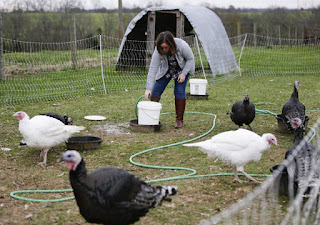Al Smith, co-founder of the Institute for Rural Journalism and Community Issues, which publishes The Rural Blog, was placed in the Public Service Hall of Fame of the Martin School for Public Policy & Administration at the University of Kentucky Friday night.
Smith has served on several state government boards, councils, committees and commissions, and helped start major civic organizations in Kentucky, but his only time on the public payroll was as federal co-chair of the Appalachian Regional Commission, appointed by Jimmy Carter but serving longer under Ronald Reagan, when he thwarted Reagan's attempt to abolish the agency.
Smith was publisher of seven weekly newspapers in Kentucky and Tennessee from 1968 to 1985. He was the founding producer and host of "Comment on Kentucky," a weekly public-affairs show on Kentucky Educational Television, from 1974 to 2007, except during his time at the ARC. Lexington lawyer Brad Cowgill, chair of the school's Board of Visitors, said in introducing Smith that journalism at its highest level is public service.
In his acceptance of the honor, Smith talked about his early years, including his decade at newspapers in New Orleans, and the alcoholism that he got under control in 1962, leading to his ownership of newspapers. His advice to the audience was "to own something," including "ownership in a community." Here's his 16-minute speech:
Al Smith from Al Cross on Vimeo.
Smith has served on several state government boards, councils, committees and commissions, and helped start major civic organizations in Kentucky, but his only time on the public payroll was as federal co-chair of the Appalachian Regional Commission, appointed by Jimmy Carter but serving longer under Ronald Reagan, when he thwarted Reagan's attempt to abolish the agency.
Smith was publisher of seven weekly newspapers in Kentucky and Tennessee from 1968 to 1985. He was the founding producer and host of "Comment on Kentucky," a weekly public-affairs show on Kentucky Educational Television, from 1974 to 2007, except during his time at the ARC. Lexington lawyer Brad Cowgill, chair of the school's Board of Visitors, said in introducing Smith that journalism at its highest level is public service.
In his acceptance of the honor, Smith talked about his early years, including his decade at newspapers in New Orleans, and the alcoholism that he got under control in 1962, leading to his ownership of newspapers. His advice to the audience was "to own something," including "ownership in a community." Here's his 16-minute speech:
Al Smith from Al Cross on Vimeo.




























